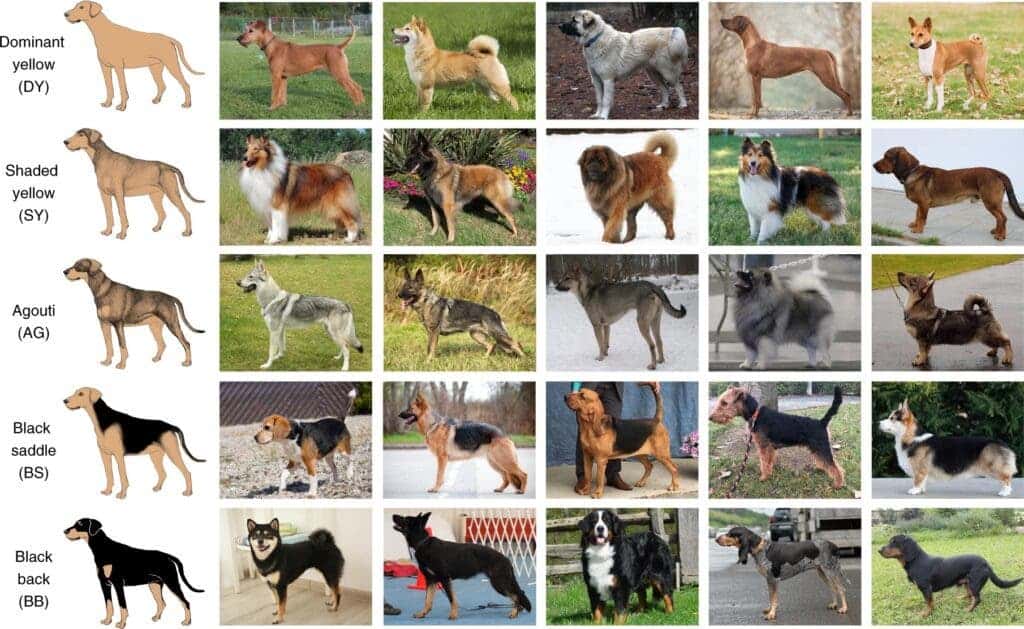
The level of variation in dogs is simply astounding. It’s hard to believe when you look at them, but Great Danes and Chihuahuas are the same species despite a ten-fold difference in size and mass. Fur color patterns are also responsible for a rich pallet of distinctive characteristics among different breeds. And, according to a new study, these fur coloring variations are owed to genes inherited from a distant common ancestor of dogs and wolves.
The surprising connection between a yellow lab and a white wolf
Professor Danika Bannasch is a geneticist and veterinarian at the University of California, Davis, whose work is focused on identifying the molecular causes for inherited diseases in dogs and horses. While at the University of Bern in Switzerland, Bannasch got the idea of figuring out the fundamental genetic basis for black and tan coat colors in dogs. She quickly rallied other colleagues, including researchers affiliated with the HudsonAlpha Institute, who are experts in phylogenetics and mammalian coat patterning.
Both wolves and dogs make two different types of pigments: a black pigment called eumelanin and a yellow pigment called pheomelanin. Combining these two pigments at the right time and the right place in the canine body produces five major color patterns or phenotypes. In Bannasch’s study, these phenotypes are dominant yellow, shaded yellow, agouti, black saddle, and black back.

After sequencing the DNA of ancient dogs and wolves, the researchers discovered that the production of the yellow pigment is controlled by the agouti signaling protein, whose activity is, in turn, controlled by the ASIP gene. Mutations in two distinct areas of the ASIP gene lead to different coat patterns.
But what was very surprising was the fact that the ASIP gene has been around for at least two million years, much earlier than the domestication of dogs around 30,000 years ago.
This gene originated in a now-extinct canid that diverged from gray wolves, which explains why the same genetic combination responsible for dominant yellow coat patterns is shared with arctic white wolves. The lighter coat was likely an advantageous adaptation to the extinct canid ancestor in an arctic environment, such as during the glaciation periods between 1.5 and 2 million years ago. The coat pattern persisted and was eventually inherited by dogs and wolves.
“While we think about all this variation in coat color among dogs, some of it happened long before ‘dogs’ were dogs,” Bannasch said. “The genetics turn out to be a lot more interesting because they tell us something about canid evolution.”
“We were initially surprised to discover that white wolves and yellow dogs have an almost identical ASIP DNA configuration,” added Chris Kaelin of the HudsonAlpha Institute for Biotechnology in Huntsville, Alabama. “But we were even more surprised when it turned out that a specific DNA configuration is more than 2 million years old, prior to the emergence of modern wolves as a species.”
Meanwhile, the black back pattern was identified in a dog sample as early as 9,500 years old, showing that dogs had rich coat variations early on.
Bannasch actually has a black back Danish Swedish farmdog and two Nova Scotia duck tolling retrievers with a dominant yellow pattern. Now, she only needs three other coat patterns to have the full set, she joked.
The findings were reported in the journal Nature Ecology and Evolution.






